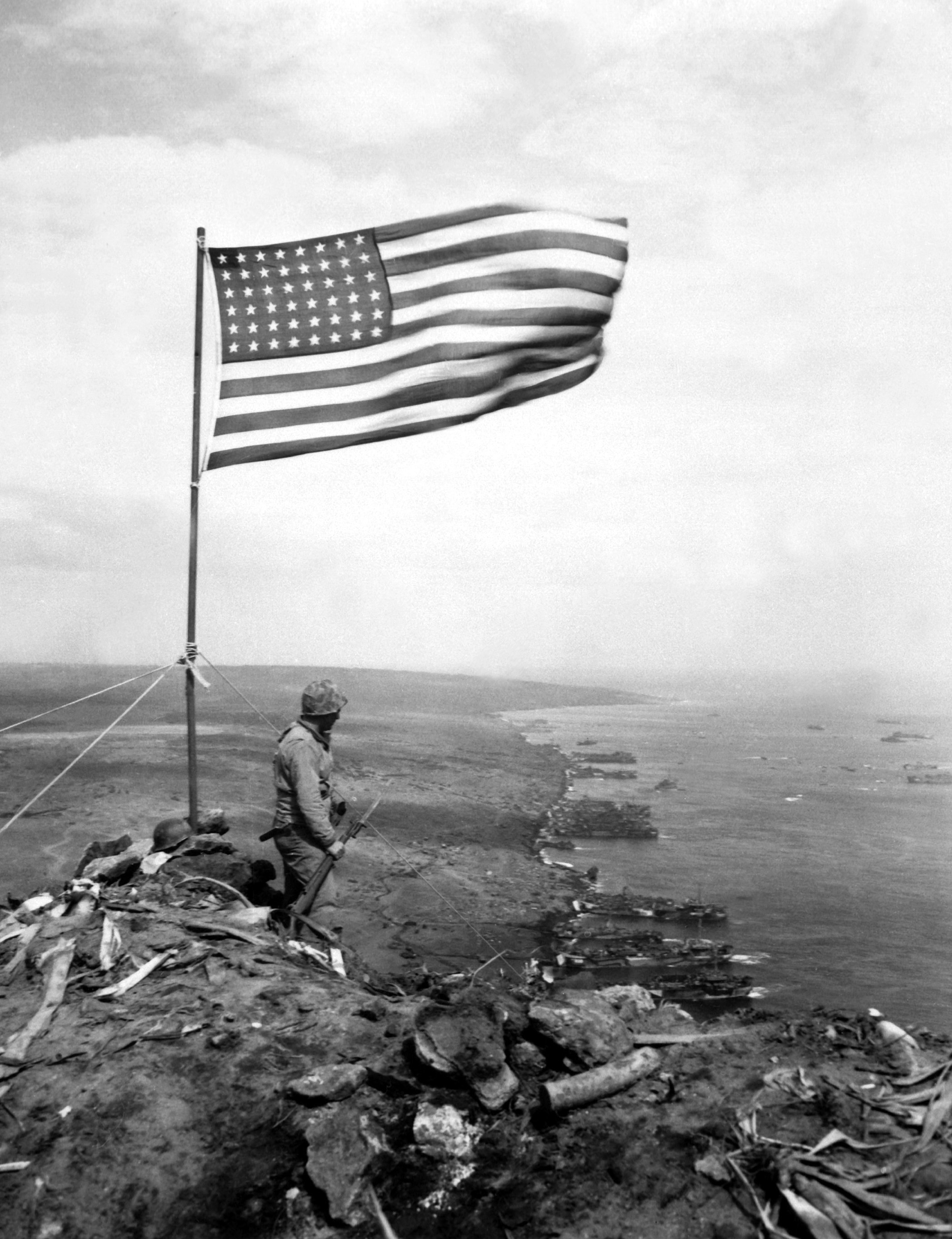Sept. 2, 2021 —
[This essay was excerpted from the book chapter of the same name: “Hot Rocks,” Sea, Surf and Hell: The U.S. Coast Guard in World War II (New York: Prentice-Hall, 1945), 276-79.]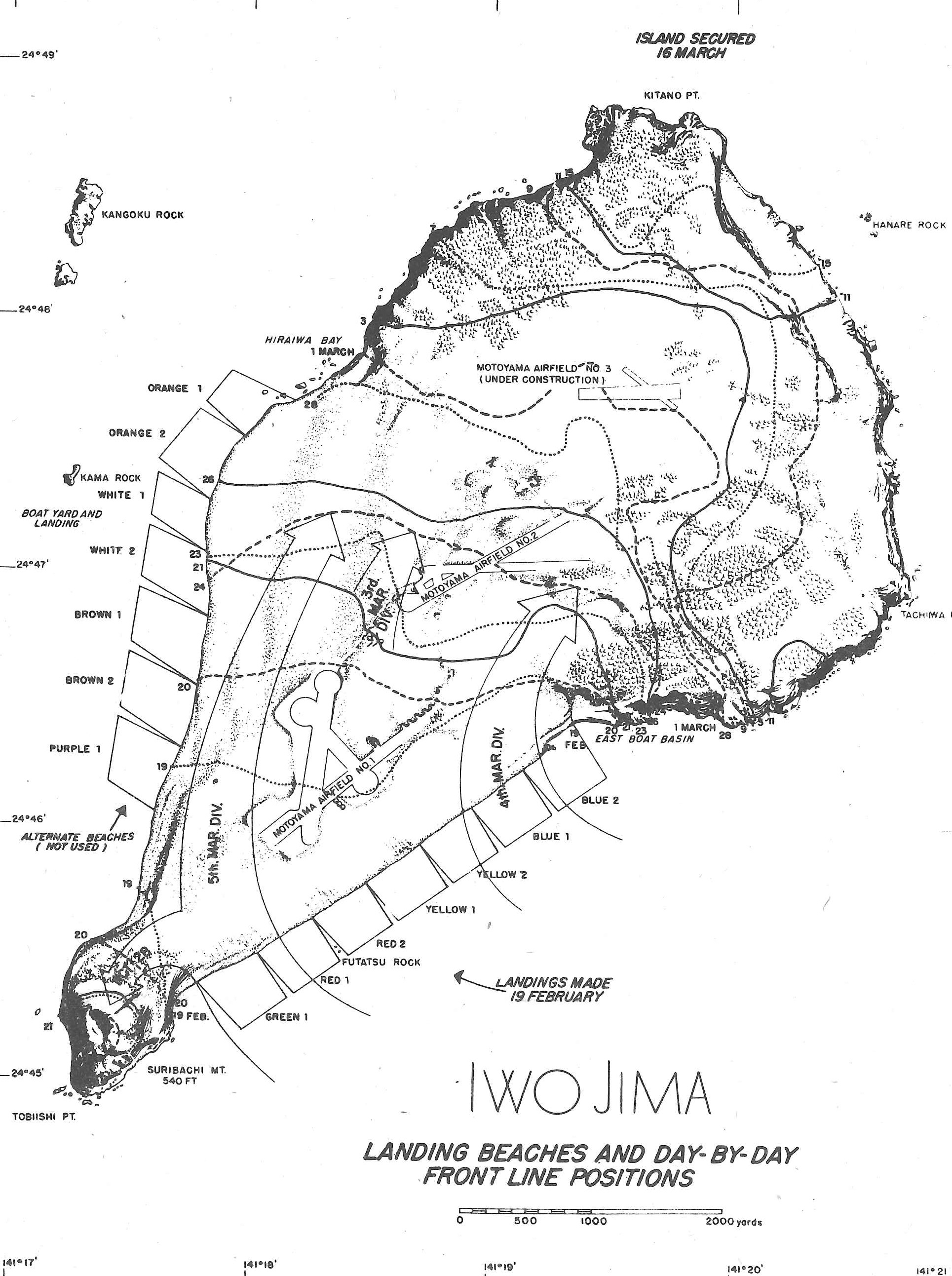
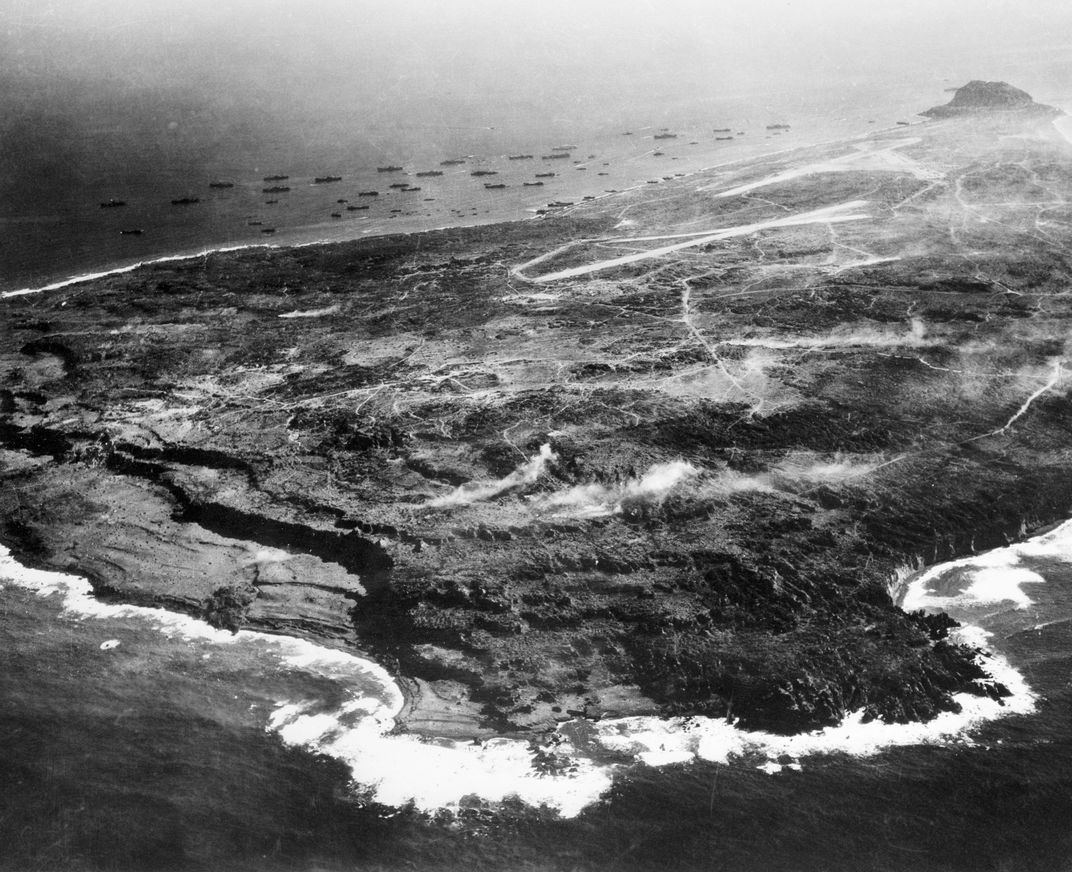 Because of the concentrated mortar fire, which the Japanese are laying down on this landing area, it is one of the bloodiest of all the assault beaches in the Pacific War to date.
Because of the concentrated mortar fire, which the Japanese are laying down on this landing area, it is one of the bloodiest of all the assault beaches in the Pacific War to date.
Death comes to meet the landing craft a hundred yards off shore and death rides onto the beach and on up the sloping shell-pocked hillside. But it comes closest probably right at the water’s edge where there is not even the protection of a shallow hole.
That’s where the landing boats come to a halt, no longer a moving target. They lie there, completely exposed, for the time it takes their cargo of men to run out. Others, loaded with jeeps, communications equipment and other material, are on the beach for a considerable space of time. Navy and Coast Guard crews from the assault transports lying off shore are manning the boats. Some of them are not getting back to their ships. Those who get off come with another load.
The Coast Guard boat crews in this operation are veterans of D-Day and Normandy. They say that this D-Day beach is worse than anything they experienced in Europe. This is their first taste of Pacific island warfare. They approached this operation with misgivings; their worst fears are being justified.
Fire concentrated on the landing areas began at H-Hour and is continuing, even increasing in intensity, in spite of anything our forces can do.
Now the beaches are filling up with wreckage, making it more difficult for boats to get in. Amphibious vehicles and jeeps are stalled in the yielding, sliding sand at the water’s edge. Not all the boats are victims of shellfire. Some have been wrecked by the sea and now lie stalled but helpless, washing up and down in the surf.
On other assault beaches in previous operations there have been beachmasters, salvage parties, and beach parties to keep the landing area clear. There is none of this today because no one can remain on the beach. The marine assault forces can only keep 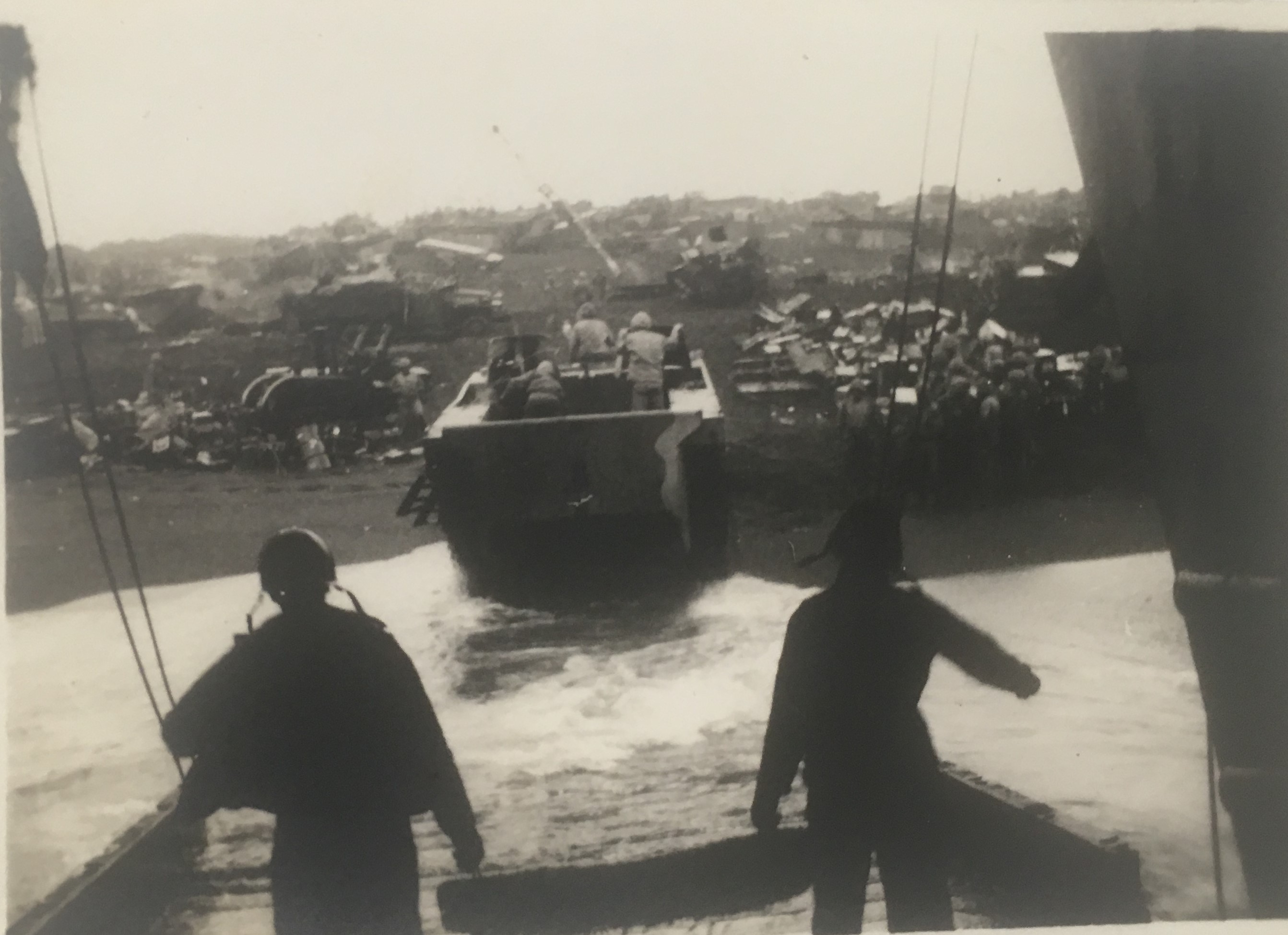 alive by moving inland. Consequently, the boats are operating pretty much on the initiative of their coxswains. They are getting in and out again as quickly as possible. When a boat is wrecked, it remains on the beach, a swashing, shifting menace to whatever comes in next.
alive by moving inland. Consequently, the boats are operating pretty much on the initiative of their coxswains. They are getting in and out again as quickly as possible. When a boat is wrecked, it remains on the beach, a swashing, shifting menace to whatever comes in next.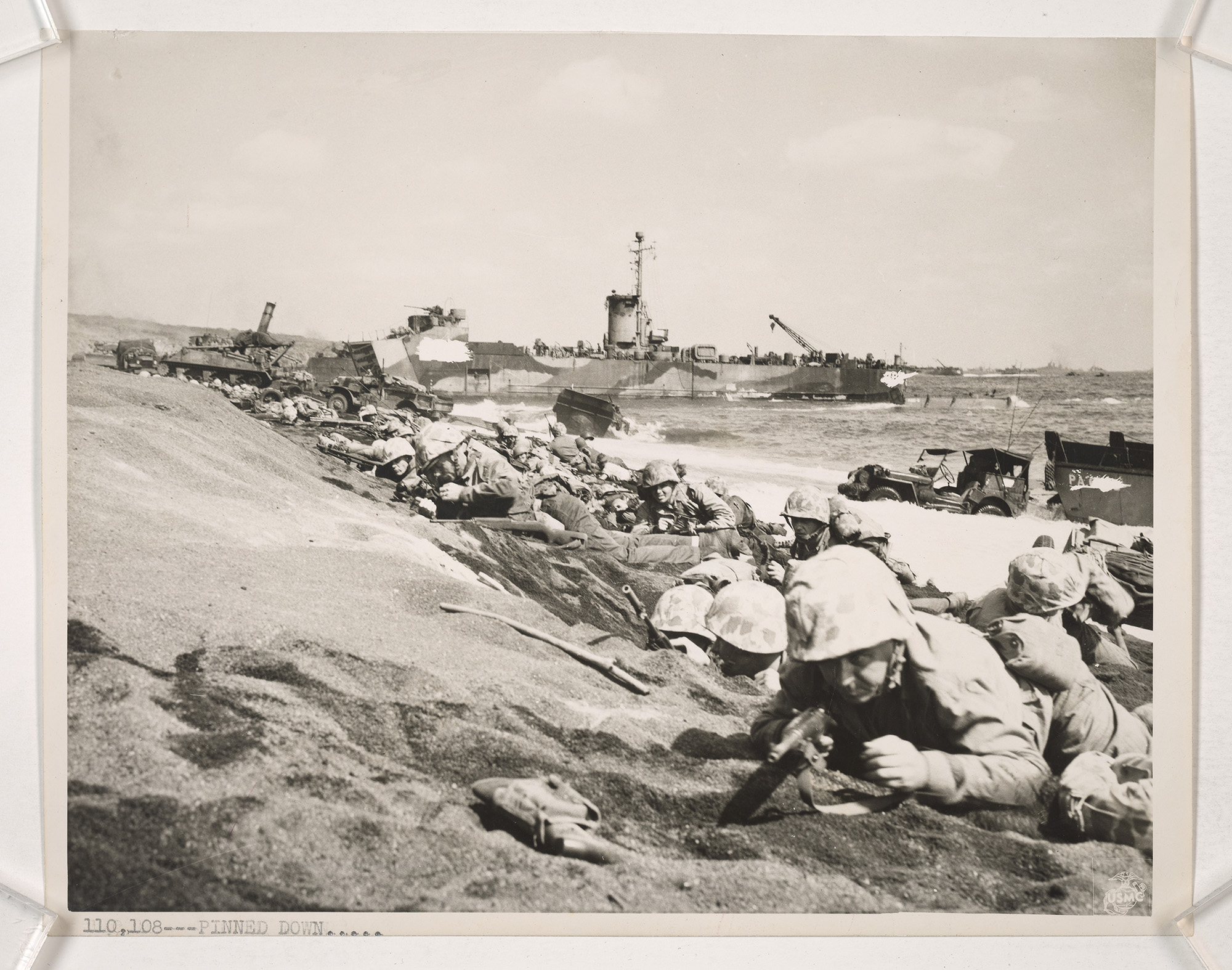
Our Coast Guard salvage party tried to come in late today. Fire kept them off and they went back to the ship to make a later try. A few of the communications men in the Coast Guard beach party made it late in the day and are still on the beach.
Boats going back to the transport area carry casualties, as many as can be brought down to the water’s edge and taken aboard before the fire makes it necessary to shove off. The boat crewmen are exposing themselves, delaying their departures to take casualties aboard. Despite this, the wounded are lying helplessly in shellholes a few yards in along the entire beach area. The fire is so heavy they cannot be carried down to the boats available. Many of the hospital corpsmen themselves have been wounded and those of the assault forces, who are alive and able, must keep moving forward. There is no safety on the beach, though the enemy is comparatively well inland.
This is what it’s like in an inland shell hole on this island of “Hot Rocks”: the hole is five or six feet deep in the slithery, gravel-like volcanic sand. A dead Marine lies half-covered with dirt on the rim. Sprawled in the hole, wheel-shape fashion, are seven men scared and half dazed from the intensity of the fire overhead. Outside, dead and wounded are lying all around. They didn’t get to a hole in time, or were blown out of a hole.
One Marine is reading aloud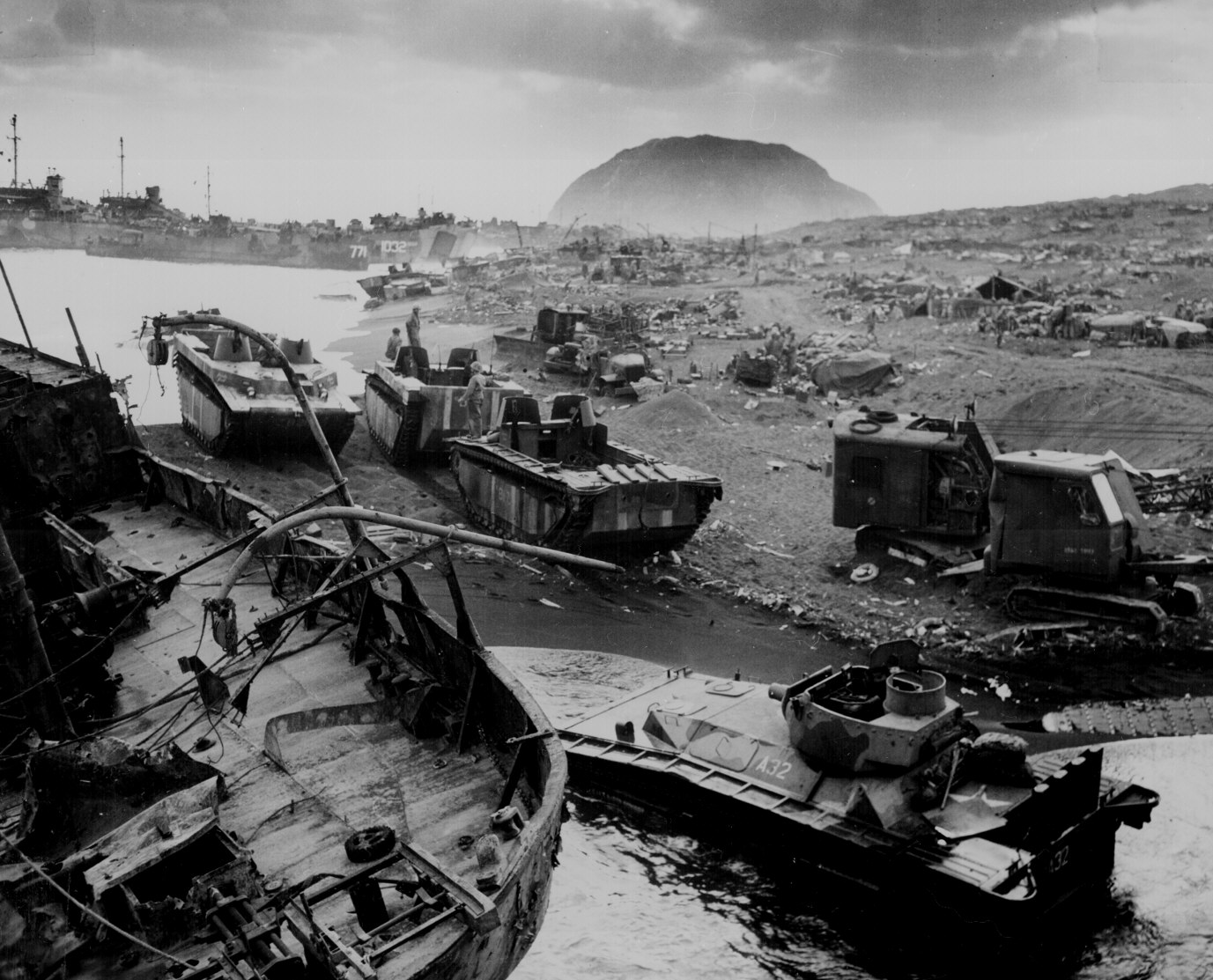 from a small service-edition Bible. It’s impossible to tell if the other men actually are listening to him, but no one else is talking.
from a small service-edition Bible. It’s impossible to tell if the other men actually are listening to him, but no one else is talking.
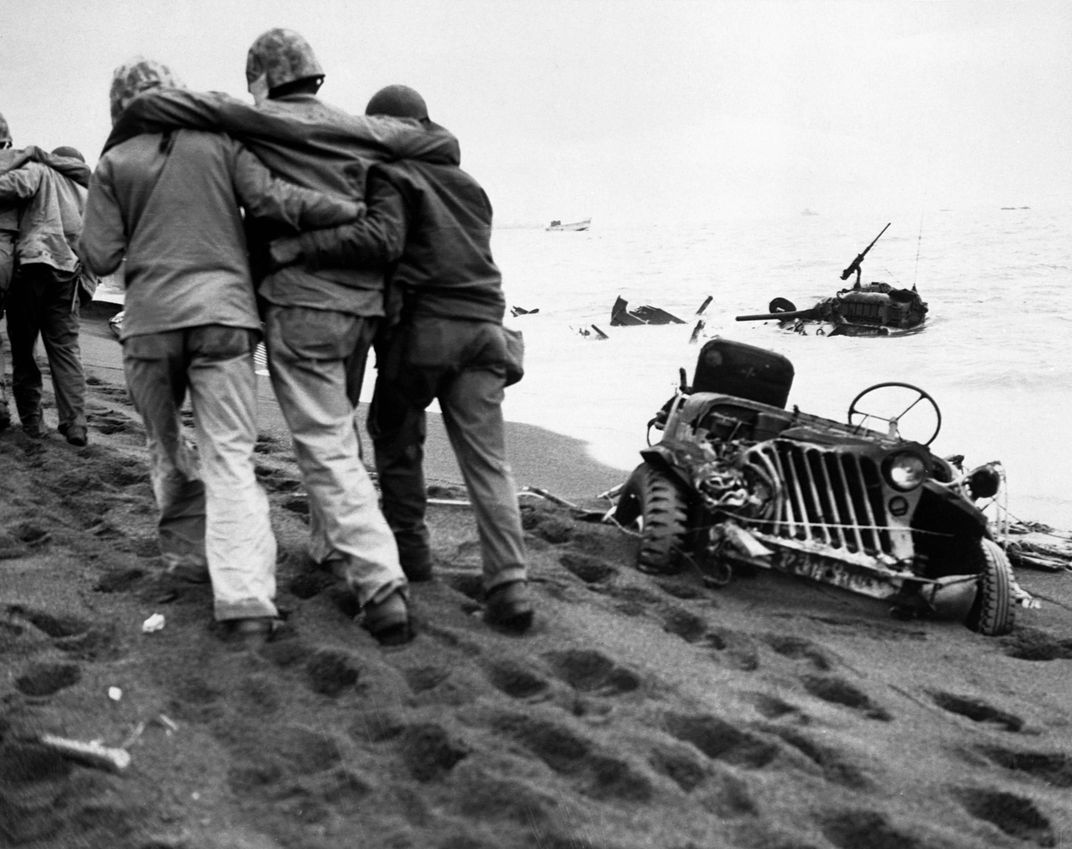 A mortar shell lands close by. After a moment someone inanely asks, “Is that enemy fire or our fire?” No one answers.
A mortar shell lands close by. After a moment someone inanely asks, “Is that enemy fire or our fire?” No one answers.
“I can’t stay here. I can’t stay here. My outfit is ahead,” a man says. Yet, at the moment, there is nothing else for him to do.
There is fear in the hole. It shows on every face. Shells go just overhead with a soft, windy whine. No one is certain they are shells from our ships, but everyone hopefully thinks so.
There are bursts nearby. The cloud of flying sand is visible even from the bottom of the hole. The next burst is nearer and everyone knows the Jap mortars are laying them down along the line again.
We climb out of the hole and run, crawl, slide, trying to move out of the line of fire. Cringe and shrink and duck, afraid to lie down and afraid to expose ourselves on the move. Breath comes in lung-tearing gasps and all the time we think—think about looking like those torn-up figures around us.
